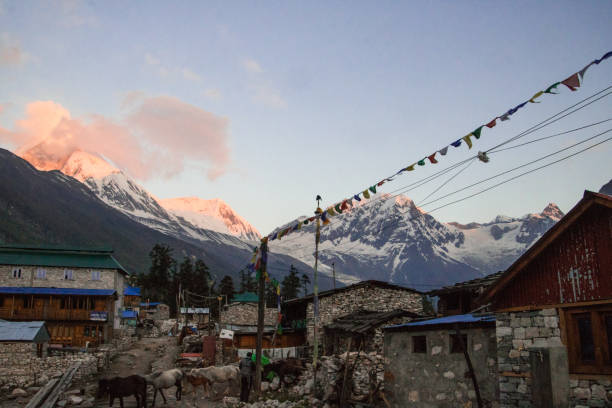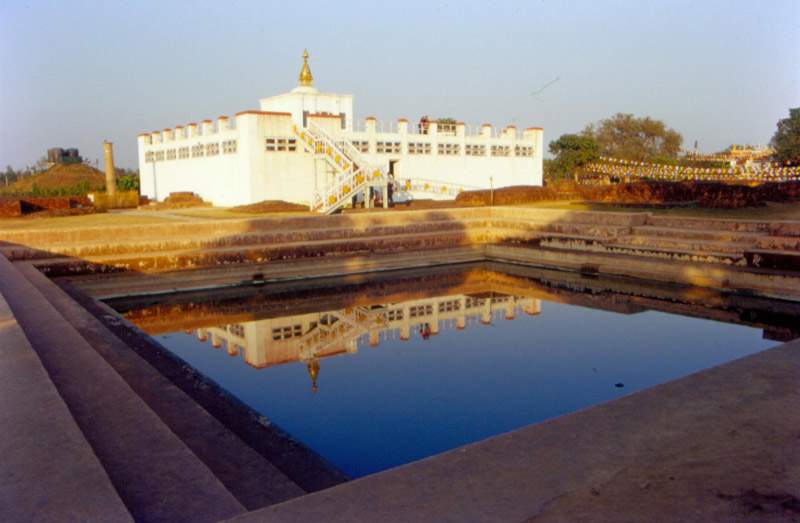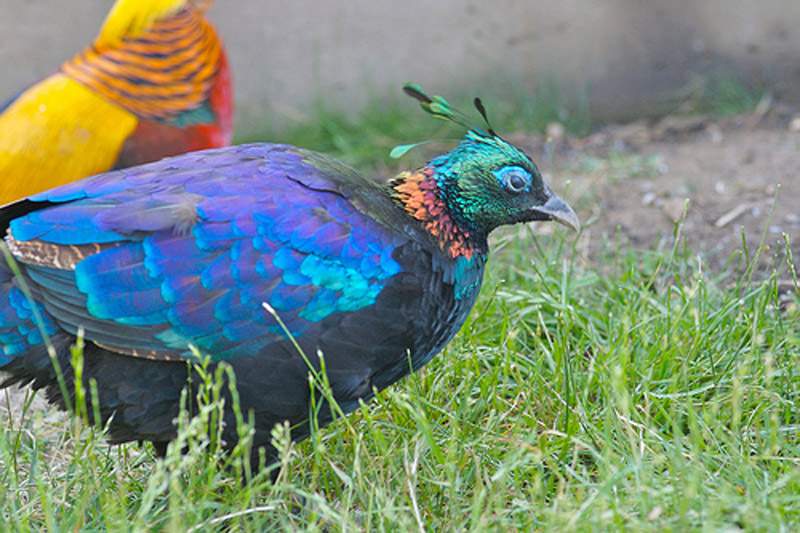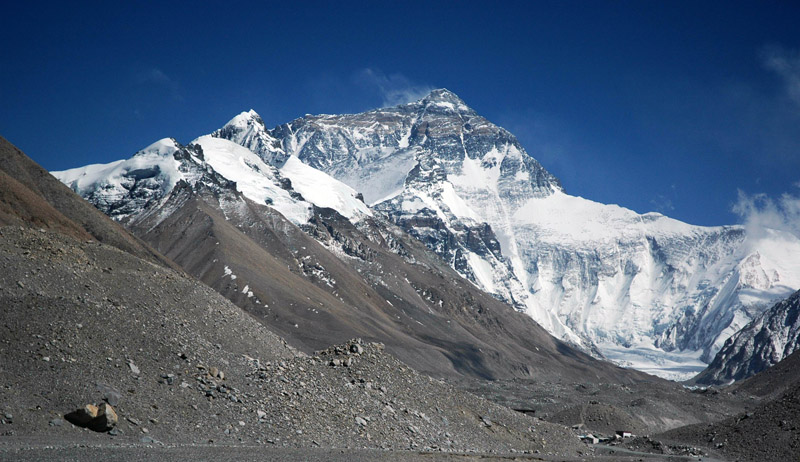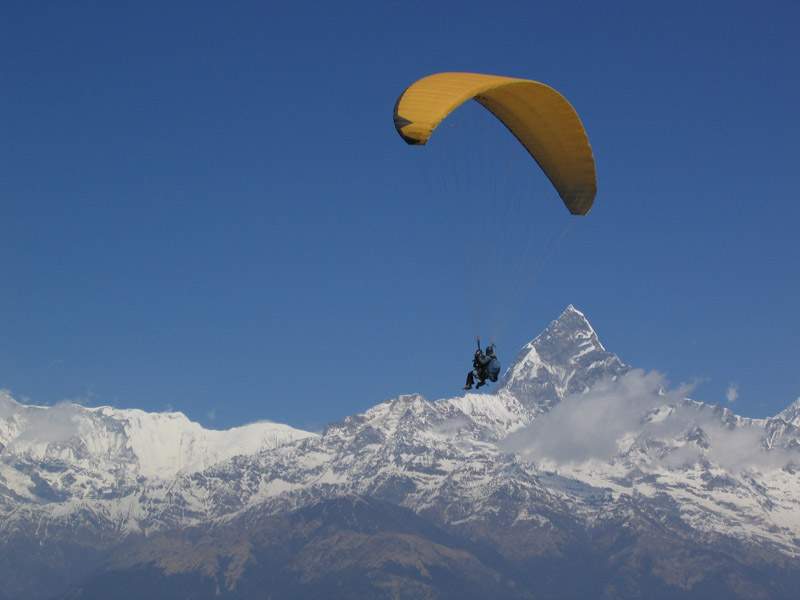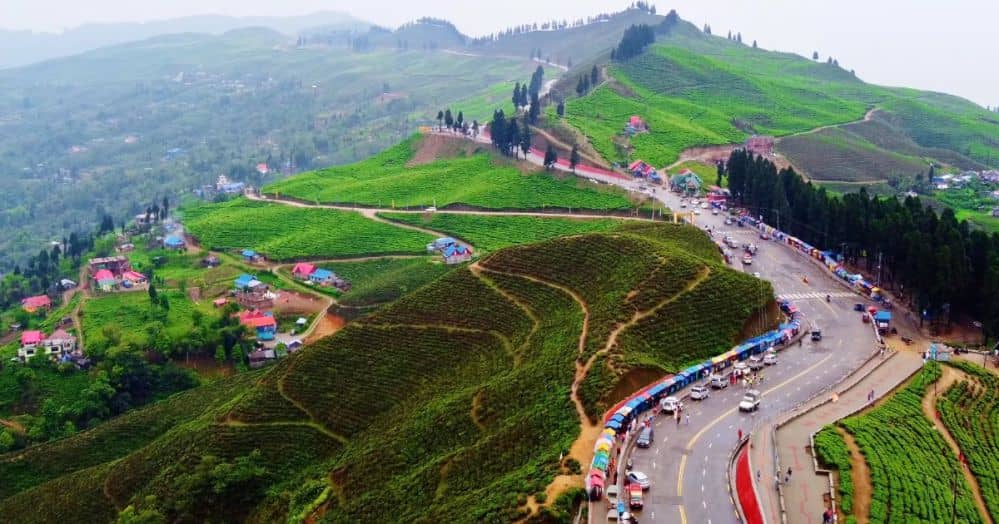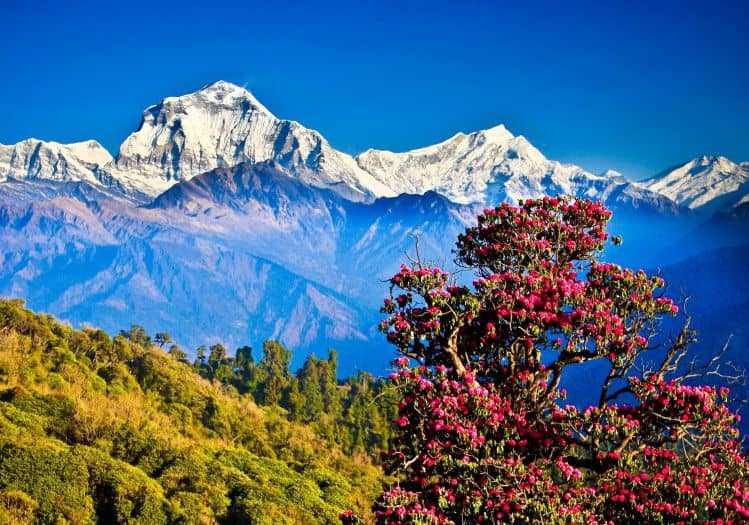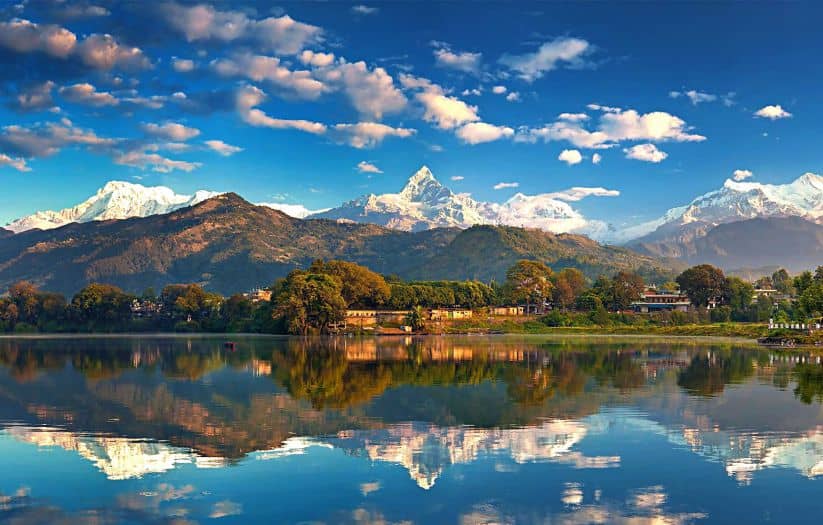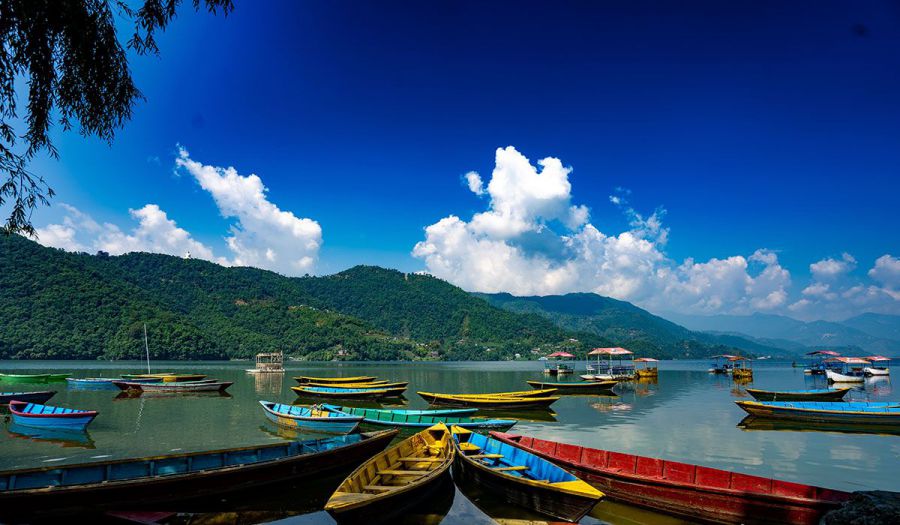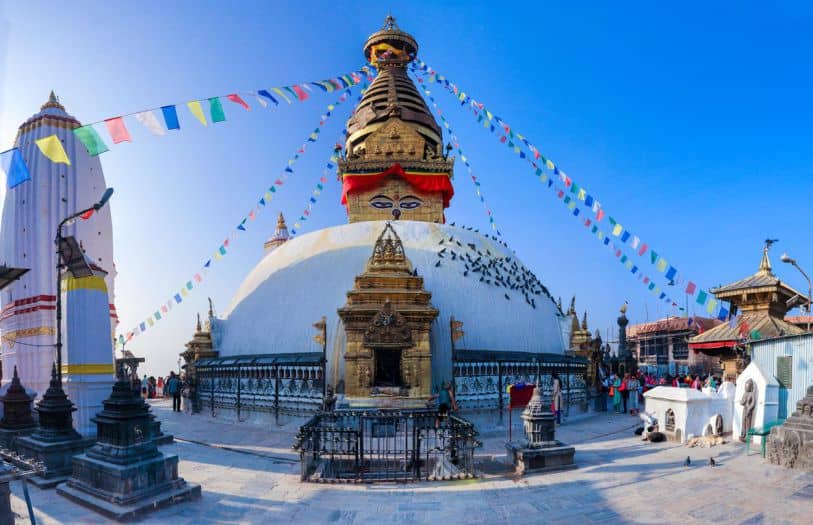Contact Info
Manaslu Circuit Trek Popular
INFORMATIONS
Manaslu Circuit Trek Overview
The Manaslu Circuit Trek is one of Nepal’s most beautiful and less crowded trekking routes It takes you around Mount Manaslu (8,163m) the eighth-highest mountain in the world. This trek is perfect for those who love nature adventure, and experiencing unique cultures. Compared to other famous treks like Everest or Annapurna, the Manaslu Circuit is quieter but just as stunning.
The journey starts in Soti Khola, a small village, and follows the Budi Gandaki River As you walk you pass through dense forests suspension bridges waterfalls and deep gorges The trail winds through charming villages where people still follow ancient Tibetan traditions You will see Buddhist monasteries, prayer flags and chortens (stupas) along the way making the trek feel spiritual and peaceful.
One of the biggest highlights of the trek is crossing Larkya La Pass (5,160m) the highest point of the journey This is a tough climb, but once you reach the top you’ll be rewarded with breathtaking views of Manaslu, Himlung Cheo, and Annapurna mountains. The feeling of standing so high, surrounded by towering snow-capped peaks, is something you will never forget.
This trek is considered moderately difficult. You don’t need to be a professional climber but you should be fit and ready for long walks steep climbs and high altitudes The trail takes about 12 to 16 days depending on your pace and the weather. Since the area is remote the trek feels like an escape into nature far from modern distractions.
The best time to trek is in spring (March-May) and autumn (September-November) when the weather is clear and the views are the best. Unlike Everest and Annapurna, where thousands of trekkers go each year Manaslu Circuit remains peaceful giving you more time to enjoy the beauty of the mountains and the warmth of the local people.
The Manaslu Circuit Trek is more than just a hike it’s a journey through wild nature high mountains and deep cultural history. If you are looking for an adventure that combines stunning landscapes, physical challenge, and rich culture this trek is a perfect choice It’s a hidden gem in Nepal that will leave you with memories to last a lifetime.
Major Highlights
- Scenic Trek Around Mount Manaslu – Walk around the stunning 8,163m Manaslu, the eighth-highest mountain in the world.
- Less Crowded & Peaceful Trails Enjoy a quieter trekking experience compared to the busy Everest and Annapurna routes.
- Crossing Larkya La Pass (5,160m) The highest and most thrilling part of the trek, offering breathtaking mountain views.
- Rich Tibetan Inspired Culture Visit Buddhist monasteries, mani walls, and prayer flags, and experience the traditions of local mountain communities.
- Diverse Landscapes Walk through lush forests, deep gorges terraced fields alpine meadows and snowy highlands in a single trek.
- Remote & Off the Beaten Path Explore untouched natural beauty and traditional villages far from modern city life.
- Teahouse Trekking Experience Stay in cozy family run teahouses where you can enjoy warm hospitality and local meals.
- Breathtaking Himalayan Views Witness Manaslu Annapurna Himlung, Ganesh Himal, and many other peaks throughout the trek.
- Suspension Bridges & River Crossings Walk over thrilling hanging bridges that stretch across rushing rivers and deep valleys.
- Best Seasons for Stunning Weather Trek during spring or autumn for clear skies comfortable temperatures and vibrant landscapes.
Why Sherpa Holic Trek & Expedition Team More Expert in Himalaya?
Sherpa Holic Trek & Expedition is more than just a trekking company it’s a team led by passionate experienced Sherpa professionals who were born in the heart of the Himalayas Here’s why adventurers from around the world trust us
Led by Real Mountain Experts: Our team including award winning trekking leader Nurbu Sherpa and founder as well Sherpa have deep roots in the Himalayas and years of hands on guiding experience.
Safety First, Always: Your safety is our top priority We follow strict safety protocols carry essential gear and ensure all staff are trained in first aid and high-altitude response.
Authentic Local Experience: As a locally run company we offer you a genuine cultural journey not just a trek You’ll meet local people experience Sherpa traditions and feel the soul of the mountains.
Custom Itineraries with Fair Prices: Whether you're looking for a challenging expedition or a peaceful trek we customize your adventure to fit your time budget and goals all without compromising on service.
Sustainable and Responsible: Tourism We care deeply about preserving the Himalayas We support local communities minimize our environmental impact and promote ethical trekking practices.
Trusted by Trekkers Worldwide: Our guests return with smiles, stories and unforgettable memories Many recommend us to friends and family a true sign of trust.
Itinerary
Welcome to Kathmandu the capital of Nepal. After you land at the airport our team will be there to greet you and take you to your hotel The city is busy and full of life with colorful streets temples and local markets. You can take some time to rest after your flight or explore nearby places. If you arrive early you can visit Thamel a popular area with shops cafes, and trekking stores. You can also see the famous Swayambhunath Stupa (Monkey Temple) or the Kathmandu Durbar Square which has old palaces and temples. In the evening we will have a short meeting about the trek. Our guide will explain the itinerary important details and things to prepare. If you need to buy or rent trekking gear this is a good time to do it. For dinner you can enjoy a traditional Nepali meal, which includes rice, lentils vegetables and local spices This is a good chance to relax and get to know your trekking team After dinner, you can return to your hotel and get a good night’s sleep before the adventure begins.
We start our journey early in the morning with a drive from Kathmandu to Soti Khola, the starting point of the Manaslu Circuit Trek. The drive takes about 7 to 8 hours and follows the Trishuli River passing through hills, forests and small villages. At first, the road is smooth, but as we go further, it becomes more rugged and bumpy Along the way you can see green valleys, terraced fields, and glimpses of snow capped mountains in the distance We stop for lunch at a roadside restaurant where you can enjoy a simple Nepali meal and take a short break. As we continue the scenery changes, and the air feels fresher. We pass through Arughat a busy town and then drive on a rough road to reach Soti Khola a small village by the river. After reaching Soti Khola we check into a teahouse where you can rest and enjoy a warm meal. In the evening, you can take a short walk around the village listen to the sound of the river and prepare for the trek ahead. Tomorrow we start walking into the beautiful landscapes of the Manaslu region.
Today is the first day of our trek. After breakfast at Soti Khola we start walking towards Machha Khola a small village along the Budi Gandaki River The trail is a mix of stone steps dirt paths, and suspension bridges, passing through green forests and terraced fields. As we walk we see local farmers working in the fields children playing and mules carrying goods along the trail. The sound of the river flowing beside us makes the journey peaceful Sometimes, we walk on narrow paths carved into the cliffs which add a little adventure to the day. We stop at a small village for lunch, where we can rest and enjoy a simple meal. After lunch, the trail goes up and down, crossing small streams and rocky paths. Along the way, we pass hot springs, where some trekkers take a short break to relax their feet in the warm water. By late afternoon, we reach Machha Khola a quiet village by the river. We check into a teahouse, where we can rest have dinner, and enjoy the peaceful surroundings. The day ends with a warm meal and a good night’s sleep before we continue our journey deeper into the Manaslu region.
After breakfast at Machha Khola we start our trek toward Jagat a beautiful village surrounded by hills and forests. The trail follows the Budi Gandaki River crossing several small streams and suspension bridges. We walk through dense forests, terraced farmlands, and traditional villages where we see local people going about their daily lives. The path is a mix of rocky steps uphill climbs, and gentle flat sections. We pass through Khorlabesi a small Gurung village and soon reach the Tatopani hot springs where some trekkers take a short break to soak their feet in the warm water. After a short rest we continue walking along the river sometimes going up and down the hills. We stop at Doban or another small village for lunch where we enjoy a simple Nepali meal. After lunch the trail becomes steeper as we climb toward Jagat. Jagat is a small stone-paved village with a traditional look. Once we reach, we check into a teahouse and rest. You can take a short walk around the village or relax with a warm meal. The peaceful surroundings make it a great place to spend the night before continuing the trek.
We start our day with a warm breakfast at Jagat then begin trekking toward Deng, a small village in the Manaslu region. The trail continues along the Budi Gandaki River passing through green forests small waterfalls and stone paved villages. At first we walk on a gentle path, but soon we have some uphill climbs and rocky sections. We pass through Salleri and Philim two beautiful villages with traditional houses and fields of millet and maize. The area is rich in Buddhist culture, and we see mani walls, prayer wheelsn and chortens along the way. After a few hours of walking we stop for lunch at a small village Here we rest and enjoy a simple meal before continuing. The trail then takes us through dense bamboo forests, where we might spot some wildlife like langurs or colorful birds. As we get closer to Deng the air feels cooler, and the landscape starts to change. We cross a few suspension bridges before reaching the village in the late afternoon. After checking into a teahouse we can rest, enjoy a warm meal, and prepare for another exciting day ahead.
After a hearty breakfast at Deng we continue our trek to Namrung, a village located in the higher hills of the Manaslu region. The trail today is a bit more challenging as we gain altitude but the scenery along the way is beautiful. We start by walking through a mix of forests and farmland, with the Budi Gandaki River still by our side. As we climb higher the trail becomes steeper and we pass through several small villages including Lihi and Sho, where we see traditional stone houses and colorful prayer flags. The culture here is strongly influenced by Tibetan Buddhism and you can spot mani stones and chortens along the path. After walking for several hours we stop for lunch at one of the villages. After our break, we continue uphill where the views of the mountains become more impressive, especially the Manaslu range. The trail has more steep sections and some rocky paths but the fresh air and peaceful surroundings make it enjoyable. By late afternoon we arrive in Namrung a lovely village with stunning views of the surrounding peaks. We check into a teahouse relax, and enjoy a warm meal. The quiet evening allows us to rest before we continue our journey higher into the mountains.
After a peaceful night in Namrung, we begin our trek to Lho a beautiful village with stunning views of the Manaslu mountains. The day’s walk is a bit longer, but the trail is very rewarding. We start by walking through forests and pastures with some gentle uphill climbs. Along the way we pass through smaller villages like Lihi and Sho where we can see traditional houses and learn about the local culture. The path is surrounded by green fields and we might see farmers working in the fields or herding yaks and goats. As we climb higher the views of Manaslu and other snow capped peaks get even better. We take breaks along the way to rest and enjoy the beautiful mountain scenery At lunchtime we stop in a small village to have a warm meal and chat with our fellow trekkers. In the afternoon, the trail becomes steeper, and we feel the altitude more but the effort is worth it as we reach Lho. This village is peaceful with stunning views of the surrounding mountains. After checking into a teahouse, we can relax, enjoy some food and rest for the next day’s adventure.
After breakfast in Lho we start our trek to Samagaon, a peaceful village that sits at the foot of the Manaslu mountain. The trail today is not very long but we still gain some altitude, which means the air feels cooler and thinner. We begin by walking through a beautiful forest where the sound of birds and the wind in the trees makes the walk feel calm and serene. As we move higher we start to see more Tibetan Buddhist symbols like mani walls and chortens, showing the strong Tibetan culture in this area. The path becomes a bit steeper as we approach Samagaon, but the views are incredible. You can see the tall peaks of Manaslu and other snow covered mountains. The mountain views get closer and clearer as we get higher. Along the way we stop for lunch in a small village where we rest and have a warm meal. By the afternoon, we arrive in Samagaon, a beautiful village with traditional stone houses. After checking into a teahouse we can relax and enjoy the breathtaking views of Manaslu. This is a quiet place to rest and prepare for the exciting days ahead.
Today is an acclimatization day in Samagaon which means we stay in the village to help our bodies adjust to the higher altitude before we continue our trek. This is very important to avoid altitude sickness and make sure we are strong for the days ahead. In the morning, we can relax and enjoy the beautiful views of Manaslu and the surrounding mountains. It’s a good time to rest and recover from the trek so far. Some trekkers take short walks around the village to get used to the higher elevation. After lunch, we can take a hike to Manaslu Base Camp or visit Pungyen Monastery, both of which offer stunning views and are great for getting used to the altitude. The walk to the monastery takes about 2-3 hours, and it’s a great way to explore the area and learn about the local culture. Throughout the day we keep our pace slow and steady to help our bodies adjust. This extra rest will help us feel more comfortable as we continue our journey After a day of exploring and resting we return to the teahouse in Samagaon, have a warm meal and prepare for the next leg of the trek
After a restful day in Samagaon we are ready to continue our journey Today we trek to Samdo a small village at a higher altitude. The trail starts by crossing barren hills and walking through a wide valley with Manaslu towering above us. The landscape becomes more rugged and beautiful as we go higher. The walk is mostly gentle uphill, with a few rocky paths along the way. We pass small stone houses and Tibetan-style monasteries, which make the journey feel peaceful and spiritual. Along the way, we can see yaks grazing and local people carrying goods. The trek takes us through some beautiful forests and past blue streams, which add to the charm of the day. As we get closer to Samdo, the air gets cooler and thinner. We may feel a little tired because of the altitude, but we take breaks to rest and stay hydrated. By the afternoon we arrive in Samdo a small and quiet village. We check into a teahouse to rest and enjoy the stunning views of the surrounding mountains. After a warm meal we can relax and enjoy the peaceful environment before continuing the trek tomorrow.
Today we leave Samdo and trek to Dharamsala a small settlement also known as Larkya Phedi, located near the base of the Larkya Pass. The day’s trek is relatively short but steep as we continue to gain altitude. We start by walking along a rocky trail surrounded by barren hills and the snow-capped peaks of the Manaslu mountain range. The air becomes cooler as we climb higher. We pass through small Tibetan villages and might see yaks or sheep grazing in the fields. The scenery is more open and wild, with fewer trees and more high-altitude plants. As we approach Dharamsala, the altitude becomes more noticeable and we may feel a bit breathless, but we take things slowly and enjoy the views. The village is quite small and the main purpose of staying here is to rest before crossing the Larkya Pass the next day. By the afternoon, we arrive in Dharamsala where we check into a teahouse. After a warm meal we can relax and rest. We prepare for the challenging but exciting trek to Larkya Pass the next day knowing that we’re getting closer to the adventure’s peak.
Today is one of the most exciting days of the trek We start early in the morning and head towards Larke La Pass at an altitude of 5,160 meters This pass is the highest point of the Manaslu Circuit Trek so it is a big achievement for all trekkers. The trail starts with a steep climb as we move higher into the mountains. The weather can be cold and windy and the air is thinner so we need to take slow and steady steps As we reach the top of the Larke La Pass the views are amazing We can see the snow-covered peaks of Manaslu and the surrounding mountains. It feels like we’re standing at the top of the world. After a short rest at the pass to enjoy the views and take photos, we begin our descent to Bimtang. The path down is rocky and sometimes slippery so we need to be careful. As we get lower the scenery changes to green hills and forests. By afternoon we reach Bimtang, a peaceful village where we can relax after the long challenging day. We check into a teahouse enjoy a warm meal and rest for the night knowing that we’ve crossed one of the most beautiful and challenging passes in the world
After crossing Larke La Pass and resting in Bimtang, we continue our trek to Dharapani. The journey today takes us through beautiful forests, past small villages, and across rivers. The trail is mostly downhill, making it easier than the previous days. We begin by walking through pine forests and crossing some streams. The air is warmer now as we descend and we can see green fields and local farms along the way. We might see yaks, goats and sheep grazing in the fields adding to the peaceful atmosphere of the trail. As we continue walking we pass through small villages like Salu where local people live in traditional houses. The path is wide and well marked making the walk enjoyable. After a few hours of trekking, we reach Dharapani, a larger village with a few guesthouses and shops. In Dharapani, we check into a teahouse where we can relax and enjoy a warm meal. The views of the surrounding hills and mountains are still beautiful but we are now at a much lower altitude, making it easier to breathe. After a restful day of trekking, we prepare for the next stage of our journey.
Today, we leave Dharapani and head back to Kathmandu. The journey is long but we take a comfortable ride in a private jeep or bus. The drive takes about 8 to 10 hours, depending on the road conditions. As we start we pass through villages and small towns along the way. The roads are bumpy, but the views are beautiful with green hills terraces and river valleys. We tavel through subtropical forests and follow the winding roads that take us back to the hustle and bustle of Kathmandu. On the way, we might stop for lunch and a few breaks to stretch our legs. After traveling for hours, we finally arrive in Kathmandu by evening. The busy city feels much different from the peaceful mountain trails we’ve been on. Once we arrive we check into a hotel and can relax. It feels good to be back in the city after the adventure in the mountains. After settling in, you can explore Kathmandu or just rest after the long day of traveling. Tomorrow, you can reflect on the amazing memories of your Manaslu Circuit Trek.
Day Today is the last day of your Manaslu Circuit Trek adventure. After an incredible journey through the mountains, it is time to say goodbye to Nepal. Depending on your flight schedule you will be transferred to Tribhuvan International Airport in Kathmandu. The drive to the airport takes around 30 minutes to an hour depending on traffic. You might feel a little sad to leave, but you can look back on all the beautiful memories you made during your trek. From the stunning mountain views to the unique villages and peaceful moments along the way this trek has been a special experience.Once at the airport you will complete your check-in and go through security before heading to your flight. If you have time, you can do some last minute shopping for souvenirs like pashmina scarves Tibetan jewelry, or handcrafted goods. As you board the plane and fly home, you can reflect on the amazing adventure you’ve had. The Manaslu Circuit Trek is an experience you will remember for a lifetime. We hope you enjoyed the journey and look forward to welcoming you back for your next adventure in Nepal. Safe travels and farewell.
Price Includes
- Airport pick-up and drop-off in a private vehicle
- Domestic flights as per the itinerary
- Ground transportation
- Accommodation (twin-sharing Room)
- Daily meals (breakfast, lunch, and dinner and 3 cup tea during the trek)
- Trekking permits (TIMS card and National Park/Conservation Area fees)
- Experienced porter (1 porter for every 2 trekkers, carrying up to 15kg per person)
- Every 4 trekkers 1 assistant guide
- Safety & Equipment
- First Aid kit carried by the guide
- Oxygen cylinder and oximeter (for high-altitude treks)
Price Excludes
- International Flights
- Nepal Visa Fees
- Overstay fines or additional visa extensions.
- Travel & Medical Insurance. Mandatory for all trekkers and climbers.
- Trip cancellations, lost baggage, or delays.
- Personal Trekking Equipment & Gear
- Gear rental if not bringing personal equipment.
- Meals in Kathmandu & Pokhara
- Breakfast, lunch, and dinner while in cities.
- Extra Beverages, Snacks & Bottled Water
- Additional Accommodation
- Hotel upgrades beyond the included standard.
- Emergency Evacuation & Helicopter Rescue
- Tips & Gratuities
- Personal Expenses : Souvenirs, laundry, internet, and phone calls.
- Hot showers and battery charging at teahouse
- Additional Activities : Sightseeing tours, entrance fees, and personal excursions. Adventure sports like paragliding, rafting, or bungee jumping.
- For any specific exclusions related to your trekking or expedition package, feel free to ask. We're happy to assist with recommendations!
Tipping Ratio
It is customary in Nepal to tip your lead guides and filled crew . You can give tips to your lead guide end of your trip, which will then be shared with the whole team. As part of our transparency initiative, the lead guide will distribute the tips to the guides and porters in your presence. A good rule of thumb is to budget around $ 150 USD per client you need to collect and although the amount you give is entirely your choice.
Kit Lists:
.jpg)
Notes:
Pre-Trek Planning
Research the Trek Understand the difficulty duration and altitude.
Choose the Right Season:
Best times Spring (Mar–May) and Autumn (Sep–Nov) in Nepal.
Avoid monsoon (Jun–Aug) and extreme winter (Dec–Feb) for high-altitude treks.
Permits Many treks require permits such as:
TIMS Card
ACAP/ MCAP/ National Park Entry fee
Special Permits for restricted regions e.g Upper Mustang Manaslu)
Guides & Porters Recommended for safety local knowledge and support.
Altitude & Safety
Acclimatization is key Avoid rapid altitude gain to prevent Altitude Sickness AMS
Symptoms headache nausea dizziness fatigue.
Hydrate well Drink 3–4 liters of water daily.
Travel Insurance Ensure it covers high-altitude trekking and helicopter evacuation.
Emergency Contacts Know how to contact rescue services or helicopter evacuation.
Packing Essentials
Trekking Gear:
Hiking boots (broken in) backpack walking poles
Warm layers (fleece down jacket) rain gear
Sleeping bag (rated for temperature)
Health & Hygiene:
Water purification tablets sunscreen lip balm
First aid kit personal medications
Documents & Money:
Passport copy permits enough cash (ATM not available in remote areas)
Food & Accommodation
Teahouse Trekking Common in Nepal basic lodges with food and lodging.
Food Dal Bhat (rice & lentils) is a staple expect simple hearty meals.
Stay Hygienic Be cautious with water and raw food. Always treat drinking water.
Local Culture & Etiquette
Respect local traditions and religion
Dress modestly in villages.
Avoid touching heads and always ask before taking photos
Checklist Before You Go
Trekking permits arranged
Insurance with helicopter rescue
Acclimatization days planned
First aid kit packed Emergency contact list ready
Physically prepared for the trek
Client Review 0 reviews
No reviews yet for this package. Be the first to review!

